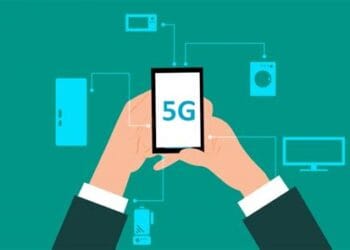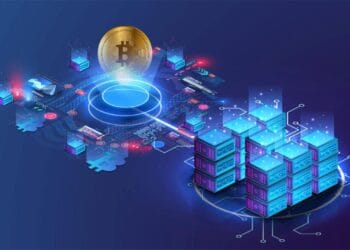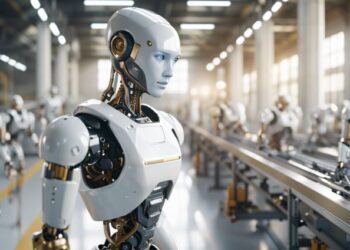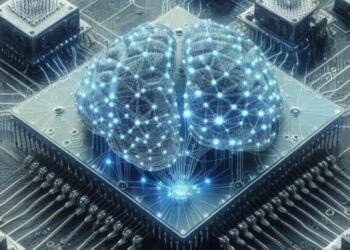For over a century, the blueprint of education remained remarkably consistent: rows of desks facing a chalkboard, a single teacher delivering a uniform lesson, and knowledge dispensed from a standardized textbook. This model, a relic of the industrial age, was designed for compliance and mass production, not individual potential. Today, that blueprint is being fundamentally redrawn. Educational Technology, or EdTech, has moved from the periphery of the computer lab to the very core of pedagogy, acting as a revolutionary force that is dismantling old paradigms and erecting a new architecture for how we teach, learn, and measure success.
This is not merely about replacing paper with pixels or blackboards with smartboards. The EdTech revolution is a profound shift in philosophy, a move away from the “one-size-fits-all” factory model towards a deeply personalized, accessible, and engaging ecosystem of learning. It is reshaping the roles of students and teachers, breaking down the physical walls of the classroom, and democratizing access to knowledge on a global scale.
This in-depth article explores the seismic shifts driven by EdTech. We will dissect the core pillars of this transformation, from hyper-personalized learning pathways to immersive virtual realities. We will examine the rising influence of Artificial Intelligence as a teacher’s tireless assistant, navigate the critical challenges and ethical questions that accompany this disruption, and cast a vision for the future classroom. The change is here, it is accelerating, and it promises to redefine the very essence of education for generations to come.
The Core Pillars of the EdTech Transformation
The current EdTech landscape is built on several foundational pillars that work in synergy to create a radically different learning experience. These are not just tools; they are transformative methodologies that empower educators and learners in unprecedented ways.
A. Hyper-Personalized Learning at Scale The single greatest failure of the traditional education model is its inability to cater to the individual. In a classroom of thirty students, there are thirty different learning speeds, styles, and levels of prior knowledge. A lesson that bores one student may completely overwhelm another. EdTech directly confronts this challenge with the promise of personalization at scale.
Adaptive learning platforms are the flagships of this movement. These sophisticated software systems use algorithms to continuously assess a student’s performance in real-time. When a student answers a question correctly, the system presents a more challenging concept. If they struggle, it offers remedial support, alternative explanations, or foundational exercises. This creates a unique learning pathway for every single student.
- Mastery-Based Progression: Instead of being pushed along by a rigid calendar, students advance only after they have demonstrated mastery of a concept. This eliminates the critical knowledge gaps that often form when students are forced to move on before they are ready.
- Data-Driven Insights for Teachers: These platforms provide educators with a detailed dashboard of student progress, highlighting exactly which concepts are causing trouble for individuals or the class as a whole. This allows teachers to move from being lecturers to being targeted interventionists, spending their time providing focused support where it is needed most.
- Student Agency: By seeing their own progress and having some control over their learning path, students develop a greater sense of ownership and motivation. Platforms like Khan Academy, DreamBox Learning, and Knewton are prime examples of tools that make this individualized journey possible for millions.
B. The Dawn of Immersive Learning Environments For generations, learning about abstract or distant concepts has been limited to the flat, two-dimensional world of textbooks and videos. EdTech is breaking through this barrier with immersive technologies like Virtual Reality (VR) and Augmented Reality (AR), creating experiences that dramatically enhance comprehension and retention.
- Virtual Reality (VR): By donning a headset, a student can be transported anywhere, real or imagined. A history lesson on ancient Rome becomes a walk through a digitally reconstructed Colosseum. A biology class can shrink down to explore the intricate workings of a human cell from the inside. An aspiring surgeon can practice complex procedures in a risk-free virtual operating theater. This power of “presence”—the feeling of actually being there—creates powerful memories and a much deeper conceptual understanding than passive observation ever could.
- Augmented Reality (AR): Instead of replacing the real world, AR overlays it with a layer of digital information. A student can point a tablet at a diagram of a jet engine and see a 3D model come to life, allowing them to deconstruct it part by part. A chemistry class can “see” the molecular bonds forming between virtual elements on their real-world lab table. AR makes the invisible visible, transforming static objects into interactive learning experiences.
C. Gamification: Unlocking Intrinsic Motivation One of the toughest challenges in education is sustained engagement. Gamification tackles this by integrating game design elements and mechanics into learning contexts. This isn’t about turning every lesson into a video game, but about leveraging the psychology that makes games so compelling.
By incorporating elements like points, badges, leaderboards, progress bars, and compelling narratives, educators can transform mundane tasks into motivating challenges. The language-learning app Duolingo is a masterclass in this, using “streaks” and competitive leagues to encourage daily practice. In the classroom, a math drill can become a quest to level up, and a history project can be framed as a mission to unlock achievements. Gamification taps into our innate desires for mastery, competition, and completion, boosting persistence and making the learning process itself a reward.
D. Democratizing Knowledge with Open Access For centuries, access to high-quality education was a privilege dictated by geography and wealth. EdTech is one of the most powerful democratizing forces in modern history, breaking down these barriers through open and online resources.
- Open Educational Resources (OER): This global movement promotes the creation and sharing of free, high-quality educational materials. University-level textbooks that once cost hundreds of dollars are now available for free as OER, alongside course syllabi, lectures, and assignments. This drastically reduces the financial burden on students.
- Massive Open Online Courses (MOOCs): Platforms like Coursera, edX, and FutureLearn have partnered with the world’s top universities to offer their courses online, often for free or at a low cost. A student in a small town in India can now take a course on artificial intelligence from Stanford or a philosophy course from Harvard. This provides unprecedented access to elite education and facilitates a culture of lifelong learning, allowing professionals to re-skill and up-skill on demand.
Artificial Intelligence: The Educator’s New Superpowered Assistant
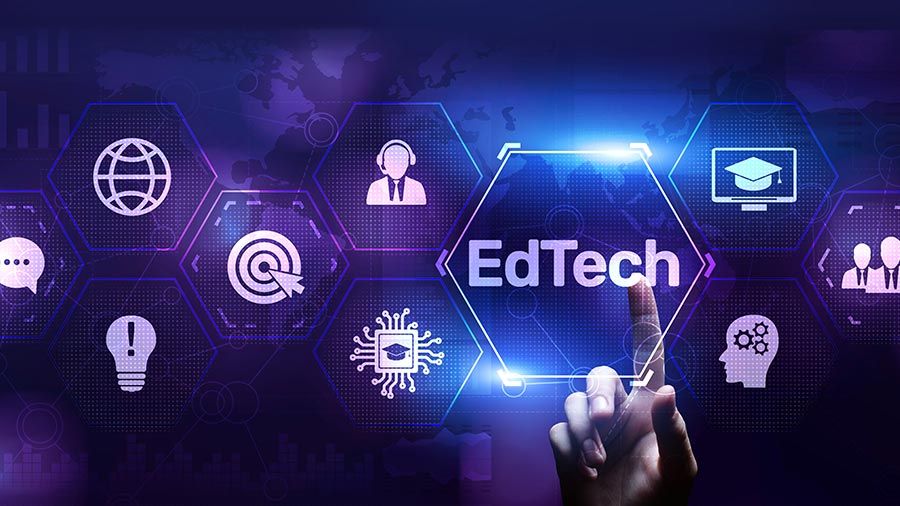
While adaptive learning uses algorithms, the rise of true Artificial Intelligence (AI) is poised to take EdTech to an entirely new level. AI’s role is not to replace teachers, but to augment their abilities and free them from administrative burdens, allowing them to focus on the uniquely human aspects of teaching: mentorship, inspiration, and emotional connection.
- Automating the Administrative Load: AI can instantly grade multiple-choice and fill-in-the-blank assessments, manage complex class schedules, and handle routine parent communications, saving teachers countless hours of paperwork.
- The 24/7 AI Tutor: AI-powered chatbots and tutoring systems can provide students with immediate help and personalized feedback at any time of day. If a student is stuck on a homework problem at 10 PM, an AI tutor can guide them through it, step by step.
- Predictive Analytics: By analyzing thousands of data points on student engagement, performance, and behavior, AI can identify students who are at risk of falling behind long before it becomes obvious to a human observer. This allows for proactive interventions that can change a student’s entire academic trajectory.
- Personalized Content Generation: AI can help create customized worksheets, study guides, and even entire lesson plans tailored to the specific needs and interests of a class or an individual student, ensuring the material is always relevant and engaging.
Navigating the Inevitable Challenges and Criticisms
The transition to a digitally-driven education system is not without significant hurdles and valid criticisms. Acknowledging and addressing these challenges is crucial for ensuring that the EdTech revolution is equitable and beneficial for all.
A. The Digital Divide The most significant barrier is the digital divide—the gap between those who have reliable access to high-speed internet and modern devices, and those who do not. If learning becomes primarily digital, students from low-income households or rural areas risk being left even further behind. Any EdTech strategy must be paired with public and private initiatives to ensure universal access.
B. Data Privacy and Security EdTech platforms collect an immense amount of sensitive data on student performance, behavior, and even emotional states. This raises critical questions: Who owns this data? How is it being used? How is it protected from commercial exploitation or cyberattacks? Strong regulations, transparency from vendors, and digital literacy for educators and parents are essential to protect student privacy.
C. The Need for Teacher Training A tool is only as good as the person using it. Simply placing technology in a classroom without providing teachers with robust, ongoing professional development is a recipe for failure. Effective EdTech integration requires a pedagogical shift, and teachers need time and training to learn how to use these new tools to genuinely enhance learning, not just as a high-tech substitute for old methods.
D. Screen Time and Digital Well-being Legitimate concerns exist about the potential negative effects of increased screen time on students’ physical health, eyesight, and social-emotional development. A balanced approach is critical. The goal of EdTech should be to enable more collaborative, hands-on, and real-world projects, not to tether students to screens for eight hours a day.
The Future Classroom: A Vision for 2030 and Beyond
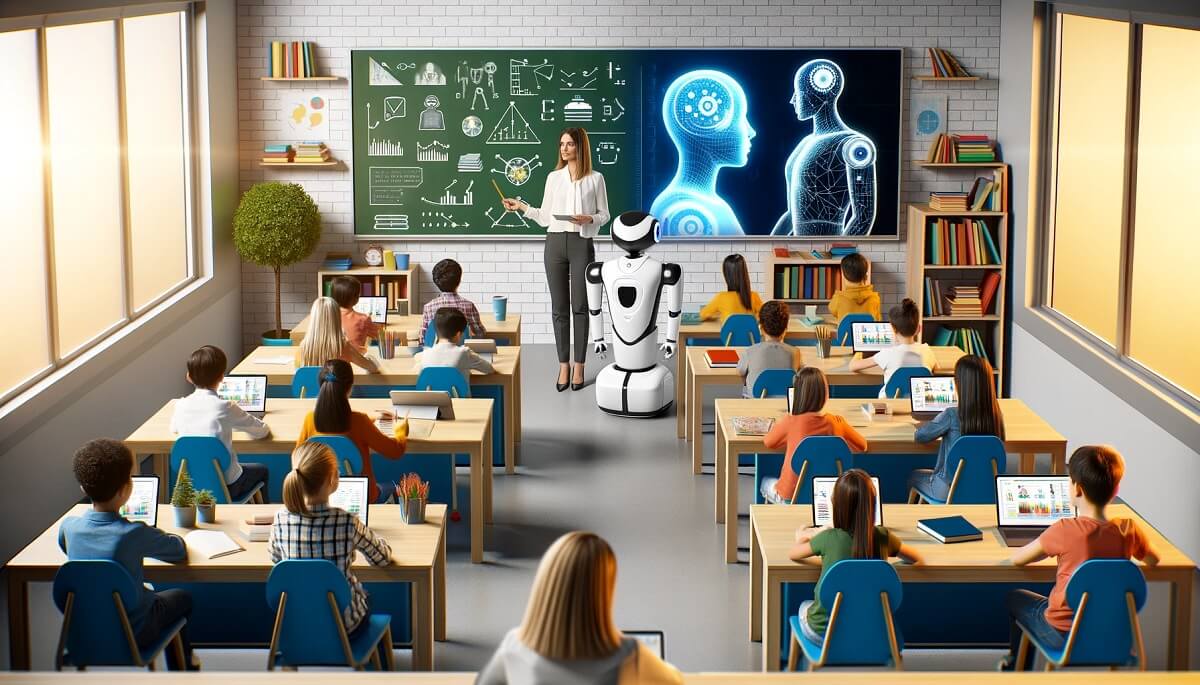
Looking ahead, the EdTech-enabled classroom will look and feel profoundly different. The revolution will culminate in a flexible, hybrid ecosystem that blends the best of digital efficiency with irreplaceable human interaction. The focus will shift from knowledge memorization—a task at which computers excel—to nurturing the skills that are uniquely human: critical thinking, creativity, collaboration, and emotional intelligence. The role of the educator will complete its transformation from the “sage on the stage” to the “guide on the side”—a mentor, a coach, and a curator of learning experiences who empowers students to navigate their own educational journeys.
An Unprecedented Opportunity
The EdTech revolution is far more than a trend; it is the new foundation of education itself. By leveraging the power of personalization, immersive experiences, and artificial intelligence, we have an unprecedented opportunity to create a more effective, equitable, and engaging learning paradigm than the world has ever known. The challenges of implementation, equity, and privacy are real and require our full attention. But the potential to unlock the unique genius within every child, to ignite a passion for lifelong learning in every adult, and to build a more knowledgeable and capable global society is a prize worth striving for. The old architecture is crumbling, and in its place, we have the tools to build something magnificent.

